If the blocks A and B are moving towards each other with accelerations a and b shown in fig. find the net acceleration of block C.
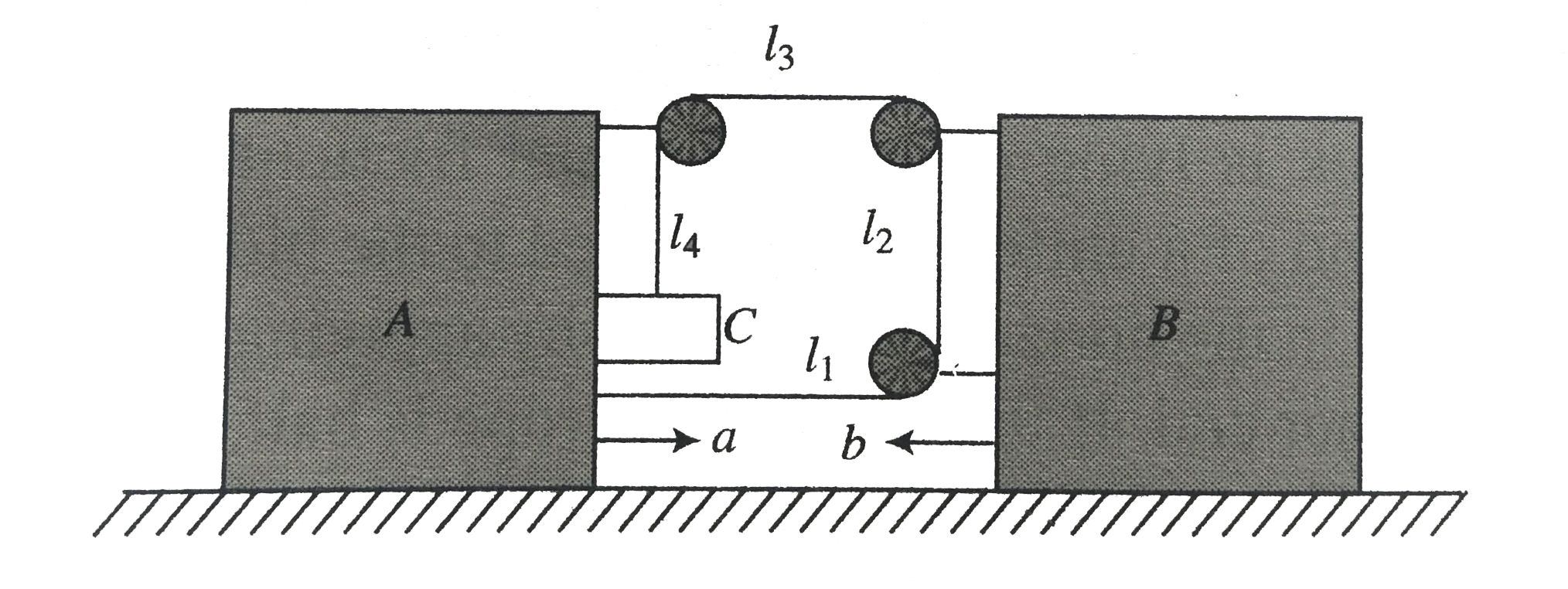
aˆi−2(a+b)ˆj
−(a+b)ˆj
aˆi−(a+b)ˆj
None of these
The correct Answer is:A

From length constraint l1+l2+l3+l4=C
l''1+l''2+l''3+l''4=0
(−a−b)+0+(−a−b)+c=0
c=2a+ab
From wedge cosntraints, acceleration of C is right side is a.
Acceleration of C w.r.t ground =aˆi−2(a+b)ˆj.
Topper's Solved these Questions
- NEWTON'S LAWS OF MOTION 1BOOK - CENGAGE PHYSICS ENGLISHCHAPTER - NEWTON'S LAWS OF MOTION 1EXERCISE - Multiple Correct
11 Videos
- NEWTON'S LAWS OF MOTION 1BOOK - CENGAGE PHYSICS ENGLISHCHAPTER - NEWTON'S LAWS OF MOTION 1EXERCISE - Assertion-reasoning
15 Videos
- NEWTON'S LAWS OF MOTION 1BOOK - CENGAGE PHYSICS ENGLISHCHAPTER - NEWTON'S LAWS OF MOTION 1EXERCISE - Subjective
15 Videos
- MISCELLANEOUS VOLUME 2BOOK - CENGAGE PHYSICS ENGLISHCHAPTER - MISCELLANEOUS VOLUME 2EXERCISE - INTEGER_TYPE
10 Videos
- NEWTON'S LAWS OF MOTION 2BOOK - CENGAGE PHYSICS ENGLISHCHAPTER - NEWTON'S LAWS OF MOTION 2EXERCISE - Integer type
1 Video
Similar Questions
If block B moves towards right with acceleration b, find the net acceleration of block A.
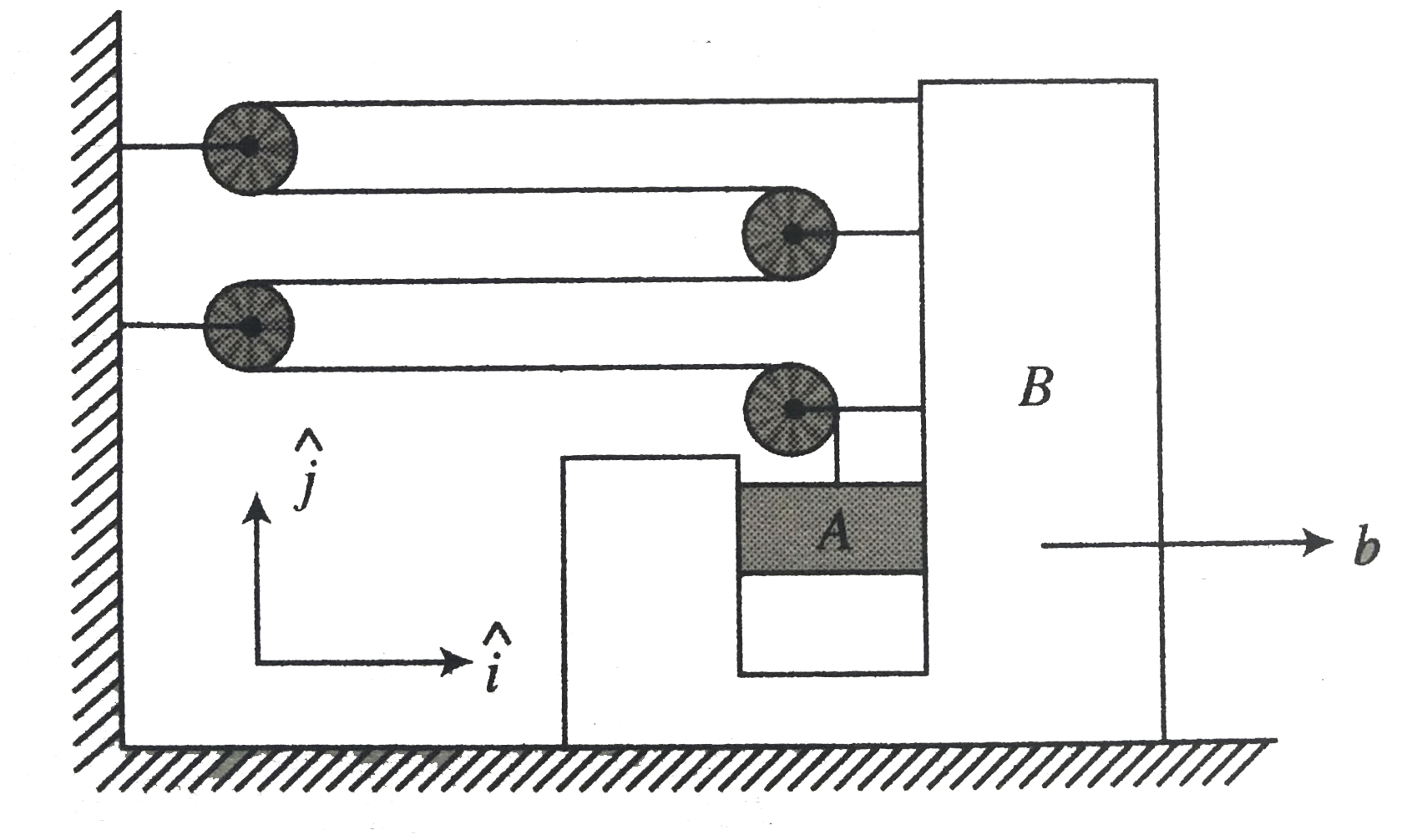
View SolutionIn the figure shown acceleration of the block is

View SolutionTwo blocks A and B of same mass m attached with a light spring are suspended by a string as shown in fig. Find the acceleration of block A and B just after the string is cut.
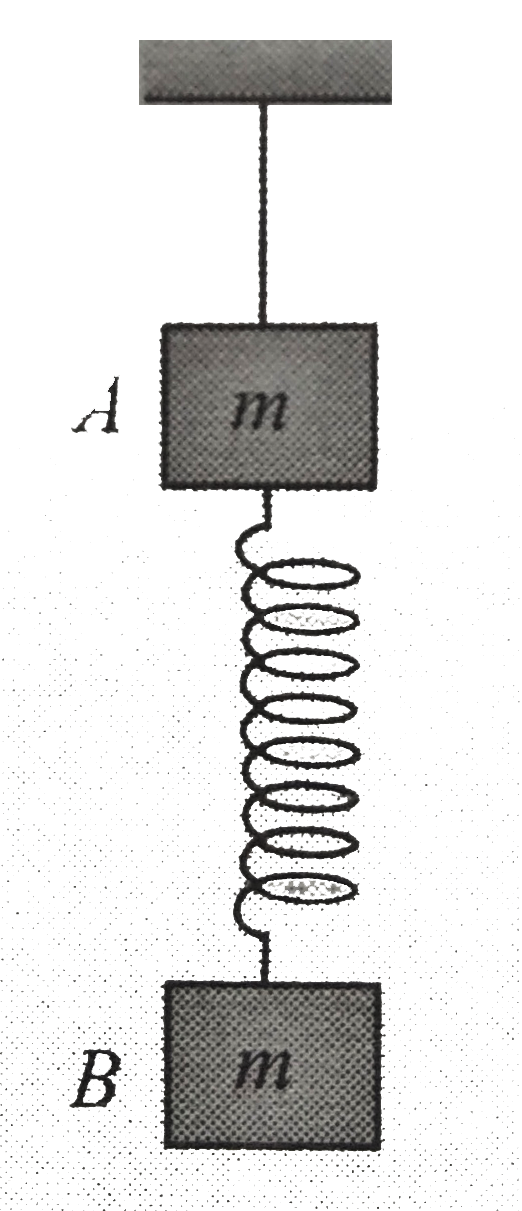
View SolutionIn the setup shown, fird acceleration of the block C.
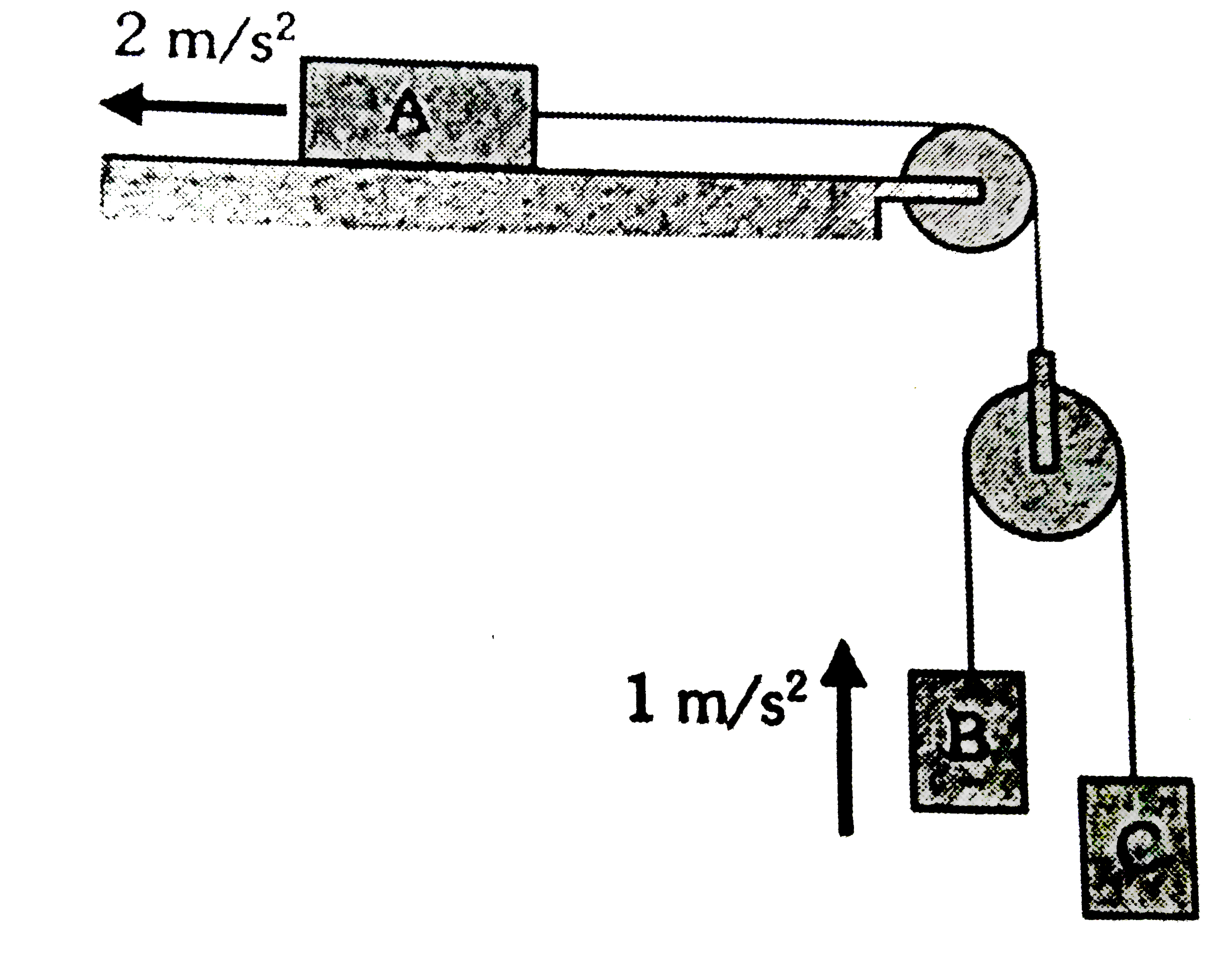
View SolutionA block of mass m is placed on a horizontla surface. If the block is pulled by applying a force of magnitude F=5mg at an angle θ=37∘, with horizontal as shown in fig. find the acceleration of the block at the given instant.
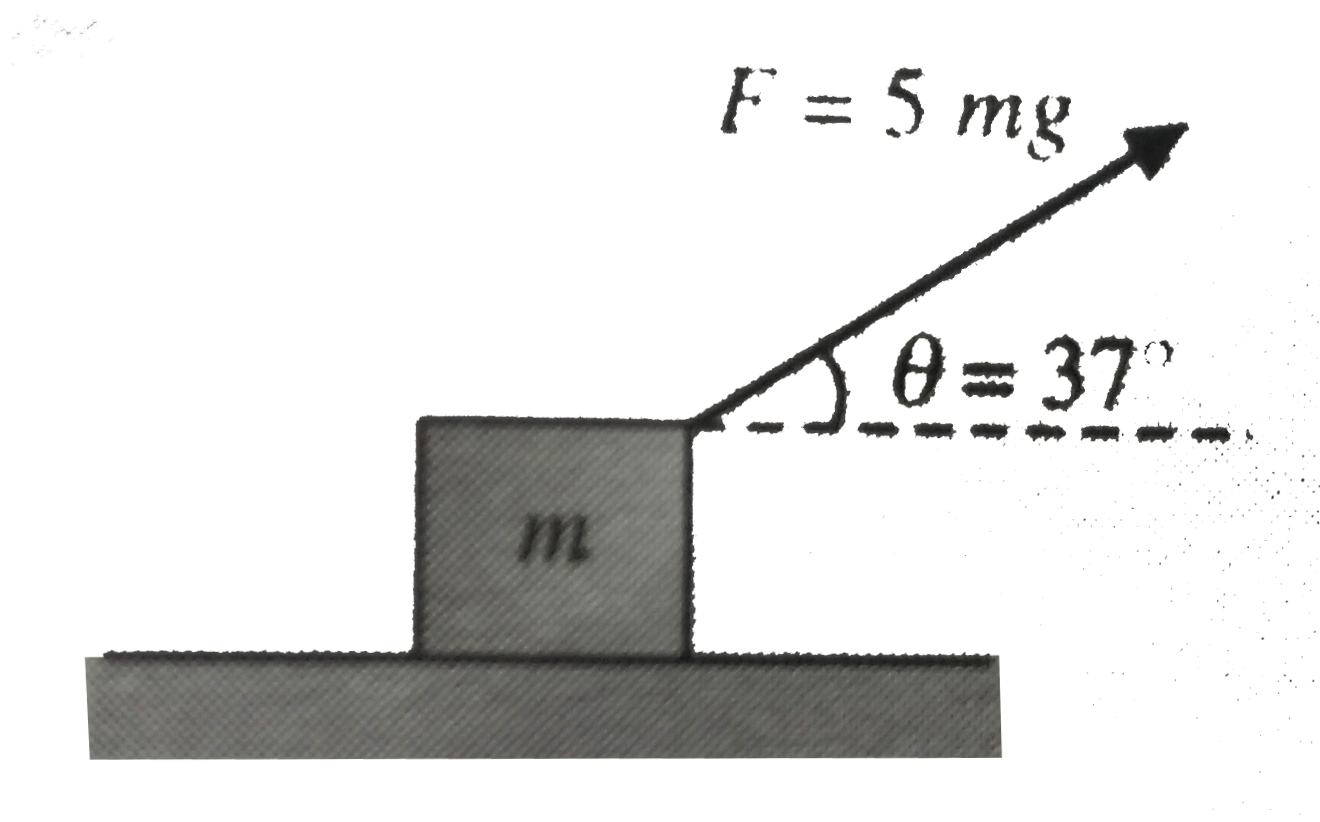
View SolutionIn the pulley-block arrangement shown in figure , find the relation between acceleration of blocks A and B
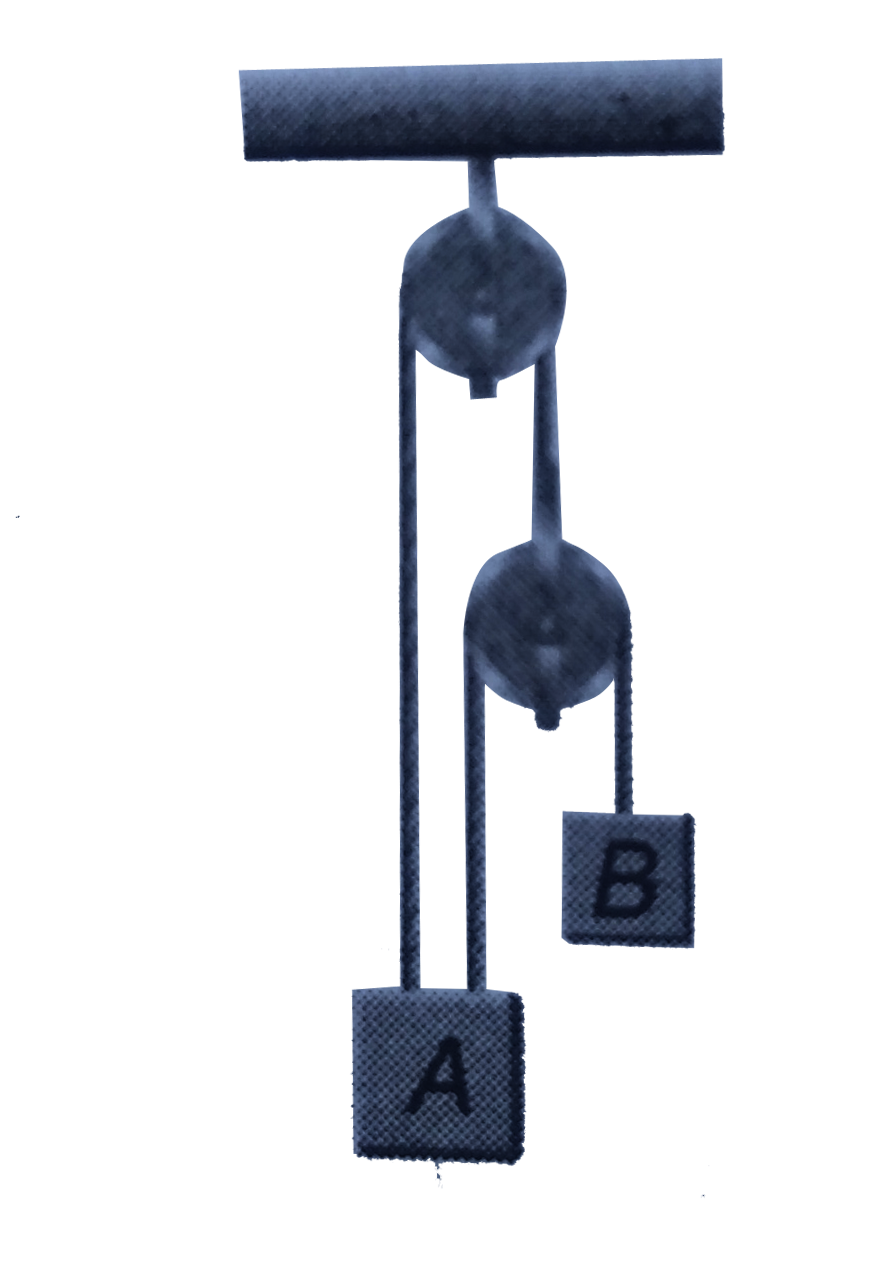
View SolutionIn the pulley-block arrangement shown in figure , find the relation between acceleration of blocks A and B

View SolutionTwo smooth block are placed at a smooth corner as shown in fig. Both the bloks are having mass m. We apply a force F on the block m. Block A presses block B in the normal direction, due to which pressing force on vertical wall will increase, and pressing force on the horizontal wall decreases, as we increases F(θ=37∘ with horizontal).
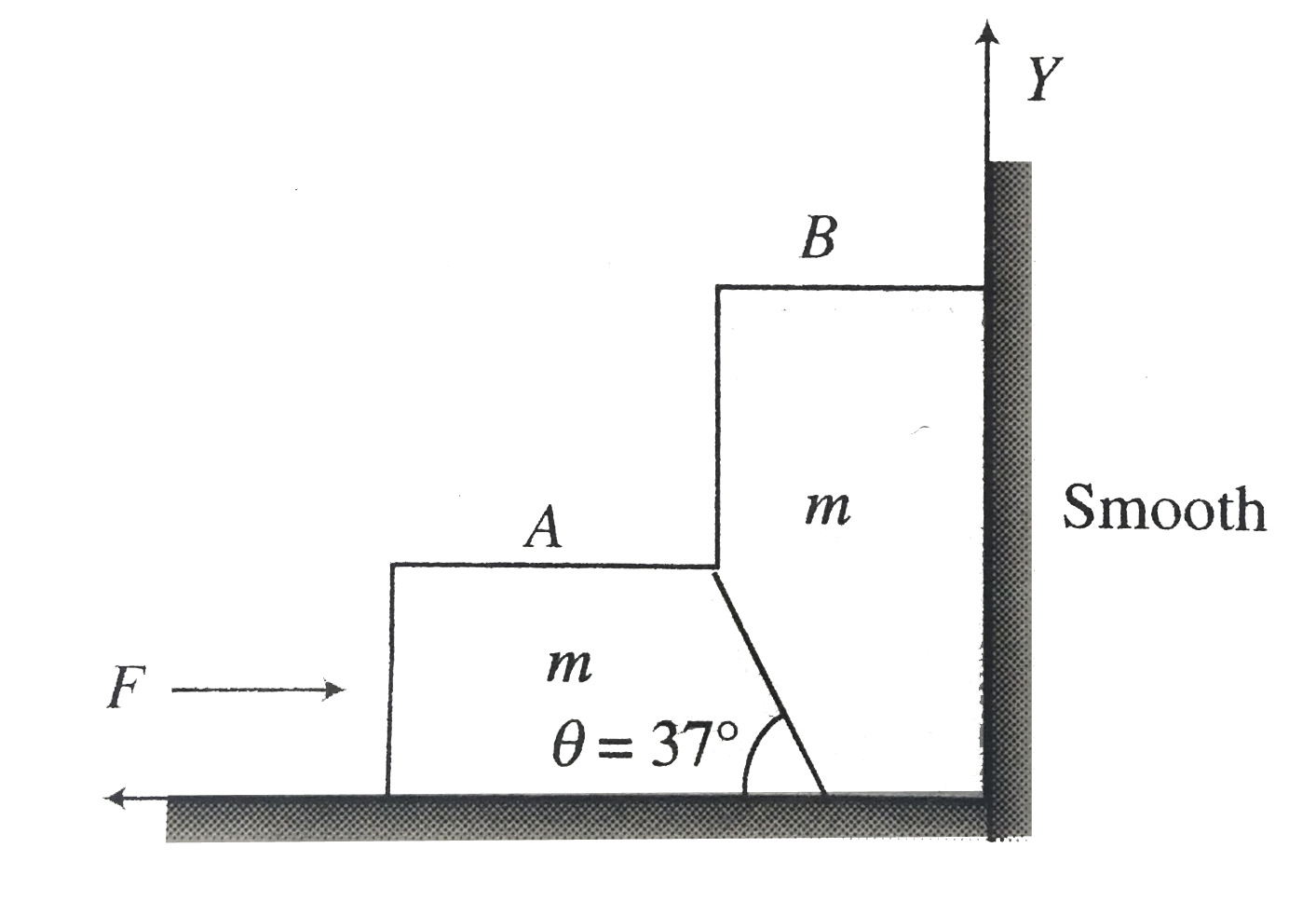
As soon as the pressing force on the horizontal wall by block B become zero, it will lose contact with ground. If the value of F further increases, block B will accelerate in the upward direction and simulaneously block A will towards right.
If the acceleration of block A is a rightwards, then the acceleration of block B will be
View SolutionTwo smooth blocks are placed at a smooth corner as shown in figure. Both the blocks are having mass m. We apply a force F on the block A. Block A presses block B in the normal direction, due to which pressing force on vertical wall will increase and pressing force on the horizontal wall decreases, as we increase F(θ=37∘ with horizontal).
A soon as the pressing force on the horizontal wall by block B becomes zero, it will lose contact with ground. If the value of F further increases, block B will accelerate in the upward direction and simultaneously block A will move towards right
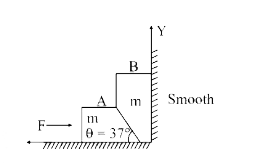
If the acceleration of block A is a rightwards, then the acceleration of block B will
View SolutionTwo smooth block are placed at a smooth corner as shown in fig. Both the bloks are having mass m. We apply a force F on the block m. Block A presses block B in the normal direction, due to which pressing force on vertical wall will increase, and pressing force on the horizontal wall decreases, as we increases F(θ=37∘ with horizontal).

As soon as the pressing force on the horizontal wall by block B become zero, it will lose contact with ground. If the value of F further increases, block B will accelerate in the upward direction and simulaneously block A will towards right.
If the acceleration of block A is a rightwards, then the acceleration of block B will be
View Solution
